Demographics of Cuba
| Demographics of Cuba | |
|---|---|
 Scatter plot of the population of Cuba (in thousands), 1774–2012 | |
| Population |
11,167,325 (2012) 11,210,064 (2013) |
| Density |
100.7/km2 (2012) 99.8/km2 (2013 est.) |
| Growth rate | -0.1% (2002–12) |
| Birth rate | 9.92 births/1,000 inhabitants (2013 est.) |
| Death rate | 7.58 deaths/1,000 inhabitants(2013 est.) |
| Life expectancy | 78.0 years (2013 est.) |
| • male | 75.8 years (2013 est.) |
| • female | 80.4 years (2013 est.) |
| Fertility rate | 1.46 children/women (2013 est.) |
| Infant mortality rate | 4.76 deaths/births (2013 est.) |
| Age structure | |
| 0–14 years | 16.6% (2013 est.) |
| 15–64 years | 71.1% (2013 est.) |
| 65 and over | 12.3% (2013 est.) |
| Sex ratio | |
| Total | 0.99 (2013 est.) |
| At birth | 1.06 (2013 est.) |
| Under 15 | 1.06 (2013 est.) |
| 15–64 years | 1.01 (2013 est.) |
| 65 and over | 0.82 (2013 est.) |
| Nationality | |
| Nationality | Cuban |
| Major ethnic | White (64.1%) (2012)[1] |
| Minor ethnic | Mulatto and mestizo (26.6%), black (9.3%) (2012) |
| Language | |
| Official | Spanish |
The demographic characteristics of the North American country of Cuba are known through census which have been conducted and analyzed by different bureaus since 1774. The National Office of Statistics of Cuba (ONE) since 1953. The most-recent census was conducted in September 2012. The population of Cuba at the 2012 census was 11.1 million. The population density is 100.7 inhabitants per square kilometer, and the overall life expectancy in Cuba is 78.0 years. The population has always increased from one census to the next, with the exception of the 2011 census, when the count decreased by 10,000. Since 1950, Cuba's birth rate has surpassed its death rate; the natural growth rate of the country is positive. Cuba is in the fourth stage of demographic transition. In terms of age structure, the population is dominated (71.1%) by the 15–64 year-old segment. The median age of the population is 39.5, and the gender ratio of the total population is 0.99 males per female.
Cuba is inhabited by mostly by whites (64.1%), while minorities include mulatto and mestizo (26.6%) and black (9.3%).[1]
Population
| Historical population | ||
|---|---|---|
| Year | Pop. | ±% p.a. |
| 1774 | 171,620 | — |
| 1792 | 272,300 | +2.60% |
| 1817 | 572,363 | +3.02% |
| 1827 | 704,487 | +2.10% |
| 1841 | 1,007,624 | +2.59% |
| 1861 | 1,396,530 | +1.65% |
| 1877 | 1,509,291 | +0.49% |
| 1899 | 1,572,797 | +0.19% |
| 1907 | 2,048,980 | +3.36% |
| 1919 | 2,889,004 | +2.90% |
| 1931 | 3,962,344 | +2.67% |
| 1943 | 4,778,583 | +1.57% |
| 1953 | 5,829,029 | +2.01% |
| 1970 | 8,569,121 | +2.29% |
| 1981 | 9,723,605 | +1.16% |
| 2002 | 11,177,743 | +0.67% |
| 2012 | 11,167,325 | −0.01% |
| Source: [2] | ||
According to the 2002 census, Cuba's population was 11,177,743, whereas the 2012 census numbered the population at 11,167,325.[3] The drop between the 2002 and 2012 censuses was the first drop in Cuba's population since Cuba's war of independence. This drop was due to low fertility and emigration, as during this time (fiscal years 2003-2012), 332,028 Cubans received legal permanent residence in the United States.[4]
Population by region in 2015 (Updated)
| Population and Area by region | |||||
|---|---|---|---|---|---|
| Province | Area (km²) | Area (%) | Population | Population (%) | Density |
| Cuba Total | 109,886.19 | 100 | 11 232 305 | 100 | 101.72 |
| Pinar del Río | 10,904.03 | 9.92 | 726,574 | 6.50 | 66.63 |
| La Habana | 5,791.59 | 5.22 | 711,066 | 6.36 | 124.06 |
| Ciudad de la Habana | 721.01 | 0.66 | 2,201,610 | 19.70 | 3053.49 |
| Matanzas | 11,802.72 | 10.74 | 670,427 | 6.00 | 56.80 |
| Villa Clara | 8,412.41 | 7.06 | 817,395 | 7.31 | 97.17 |
| Cienfuegos | 4,180.02 | 3.80 | 395,183 | 3.54 | 94.54 |
| Sancti Spíritus | 6,736.51 | 6.13 | 460,328 | 4.12 | 68.33 |
| Ciego de Ávila | 6,783.13 | 6.17 | 411,766 | 3.68 | 60.70 |
| Camagüey | 15,615.02 | 14.21 | 784,178 | 7.02 | 50.22 |
| Las Tunas | 6,587.75 | 6.00 | 525,485 | 4.70 | 79.77 |
| Holguín | 9,292.83 | 8.46 | 1,021,321 | 9.14 | 109.90 |
| Granma | 8,375.49 | 7.62 | 822,452 | 7.36 | 98,20 |
| Santiago de Cuba | 6,156.44 | 5.60 | 1,036,281 | 9.27 | 168.32 |
| Guantánamo | 6,167.97 | 5.61 | 507,118 | 4.54 | 82.22 |
| Isla de la Juventud | 2,419.27 | 2.20 | 86,559 | 0.77 | 35.78 |
Largest cities
| | |||||||||
|---|---|---|---|---|---|---|---|---|---|
| Rank | Name | Province | Pop. | ||||||
 Havana  Santiago de Cuba |
1 | Havana | Havana | 2,201,610 |  Camagüey  Holguín | ||||
| 2 | Santiago de Cuba | Santiago de Cuba | 423,392 | ||||||
| 3 | Camagüey | Camagüey | 301,574 | ||||||
| 4 | Holguín | Holguín | 269,618 | ||||||
| 5 | Santa Clara | Villa Clara | 210,220 | ||||||
| 6 | Guantánamo | Guantánamo | 208,145 | ||||||
| 7 | Bayamo | Granma | 144,664 | ||||||
| 8 | Victoria de Las Tunas | Las Tunas | 143,582 | ||||||
| 9 | Cienfuegos | Cienfuegos | 140,734 | ||||||
| 10 | Manzanillo | Granma | 132,789 | ||||||
Vital statistics[5][6]
| Average population (x 1000) | Live births | Deaths | Natural change | Crude birth rate (per 1000) | Crude death rate (per 1000) | Natural change (per 1000) | Total fertility rate | Infant mortality rate | |
|---|---|---|---|---|---|---|---|---|---|
| 1950 | 5 920 | 163 122 | 39 190 | 123 932 | 27.9 | 6.7 | 21.2 | ||
| 1951 | 6 051 | 142 693 | 40 939 | 101 754 | 23.9 | 6.9 | 17.0 | ||
| 1952 | 6 180 | 143 750 | 37 221 | 106 529 | 23.6 | 6.1 | 17.5 | ||
| 1953 | 6 305 | 150 000 | 37 161 | 112 839 | 24.2 | 6.0 | 18.2 | ||
| 1954 | 6 424 | 160 000 | 35 712 | 124 288 | 25.4 | 5.7 | 19.7 | ||
| 1955 | 6 539 | 170 000 | 37 264 | 132 736 | 26.5 | 5.8 | 20.7 | ||
| 1956 | 6 652 | 180 000 | 36 321 | 143 679 | 27.6 | 5.6 | 22.0 | ||
| 1957 | 6 765 | 188 100 | 40 572 | 147 528 | 28.4 | 6.1 | 22.3 | ||
| 1958 | 6 881 | 200 000 | 42 508 | 157 492 | 29.7 | 6.3 | 23.4 | ||
| 1959 | 7 005 | 204 300 | 44 043 | 160 257 | 29.8 | 6.4 | 23.4 | ||
| 1960 | 7 141 | 214 900 | 43 164 | 171 736 | 30.8 | 6.2 | 24.6 | ||
| 1961 | 7 290 | 234 600 | 45 945 | 188 655 | 32.9 | 6.4 | 26.5 | ||
| 1962 | 7 450 | 260 900 | 51 580 | 209 320 | 35.9 | 7.1 | 28.8 | ||
| 1963 | 7 618 | 256 900 | 49 624 | 207 276 | 34.6 | 6.7 | 27.9 | ||
| 1964 | 7 787 | 264 300 | 47 922 | 216 378 | 34.8 | 6.3 | 28.5 | ||
| 1965 | 7 952 | 263 975 | 50 027 | 213 948 | 34.0 | 6.5 | 27.6 | ||
| 1966 | 8 110 | 255 413 | 50 846 | 204 567 | 32.3 | 6.4 | 25.9 | ||
| 1967 | 8 264 | 255 311 | 51 030 | 204 281 | 31.7 | 6.3 | 25.3 | ||
| 1968 | 8 413 | 246 807 | 53 920 | 192 887 | 30.1 | 6.6 | 23.5 | ||
| 1969 | 8 563 | 238 095 | 55 654 | 182 441 | 28.5 | 6.7 | 21.8 | ||
| 1970 | 8 715 | 237 019 | 53 761 | 183 258 | 27.8 | 6.3 | 21.5 | ||
| 1971 | 8 870 | 256 014 | 54 109 | 201 905 | 29.5 | 6.2 | 23.2 | ||
| 1972 | 9 025 | 247 997 | 48 534 | 199 463 | 28.0 | 5.5 | 22.5 | ||
| 1973 | 9 176 | 226 005 | 51 238 | 174 767 | 25.1 | 5.7 | 19.4 | ||
| 1974 | 9 315 | 203 066 | 51 724 | 151 342 | 22.1 | 5.6 | 16.5 | ||
| 1975 | 9 438 | 192 941 | 50 961 | 142 958 | 20.7 | 5.5 | 15.4 | ||
| 1976 | 9 544 | 187 555 | 53 080 | 134 475 | 19.9 | 5.6 | 14.3 | ||
| 1977 | 9 634 | 168 960 | 56 084 | 112 876 | 17.8 | 5.9 | 11.9 | ||
| 1978 | 9 710 | 148 249 | 55 100 | 93 149 | 15.5 | 5.8 | 9.7 | ||
| 1979 | 9 776 | 143 551 | 54 838 | 88 713 | 14.9 | 5.7 | 9.2 | ||
| 1980 | 9 835 | 136 900 | 55 707 | 81 193 | 14.1 | 5.7 | 8.4 | ||
| 1981 | 9 886 | 136 211 | 57 941 | 78 397 | 13.9 | 5.9 | 8.0 | ||
| 1982 | 9 931 | 159 759 | 56 224 | 103 274 | 16.2 | 5.7 | 10.5 | ||
| 1983 | 9 975 | 165 284 | 58 348 | 106 938 | 16.6 | 5.9 | 10.8 | ||
| 1984 | 10 029 | 166 281 | 59 801 | 106 386 | 16.6 | 6.0 | 10.6 | ||
| 1985 | 10 097 | 182 067 | 64 415 | 117 637 | 18.0 | 6.4 | 11.6 | ||
| 1986 | 10 184 | 166 049 | 63 145 | 102 904 | 16.3 | 6.2 | 10.1 | ||
| 1987 | 10 286 | 179 477 | 65 079 | 114 398 | 17.4 | 6.3 | 11.1 | ||
| 1988 | 10 396 | 187 911 | 67 944 | 119 967 | 18.0 | 6.5 | 11.5 | ||
| 1989 | 10 504 | 184 891 | 67 356 | 117 535 | 17.6 | 6.4 | 11.2 | ||
| 1990 | 10 601 | 186 658 | 72 144 | 114 514 | 17.6 | 6.8 | 10.8 | ||
| 1991 | 10 685 | 173 896 | 71 709 | 102 187 | 16.3 | 6.7 | 9.6 | ||
| 1992 | 10 758 | 157 349 | 75 457 | 81 892 | 14.6 | 7.0 | 7.6 | ||
| 1993 | 10 822 | 152 226 | 78 531 | 73 695 | 14.1 | 7.3 | 6.8 | ||
| 1994 | 10 879 | 147 265 | 78 648 | 68 617 | 13.5 | 7.2 | 6.3 | ||
| 1995 | 10 932 | 147 170 | 77 937 | 69 233 | 13.5 | 7.1 | 6.3 | ||
| 1996 | 10 981 | 148 276 | 79 662 | 68 614 | 13.5 | 7.3 | 6.2 | ||
| 1997 | 11 024 | 152 681 | 77 316 | 75 365 | 13.8 | 7.0 | 6.8 | ||
| 1998 | 11 064 | 151 080 | 77 565 | 73 515 | 13.7 | 7.0 | 6.6 | ||
| 1999 | 11 102 | 150 871 | 79 499 | 71 372 | 13.6 | 7.2 | 6.4 | ||
| 2000 | 11 138 | 143 528 | 76 463 | 67 065 | 12.9 | 6.9 | 6.0 | ||
| 2001 | 11 175 | 138 718 | 79 395 | 59 323 | 12.4 | 7.1 | 5.3 | ||
| 2002 | 11 212 | 141 276 | 73 882 | 67 394 | 12.6 | 6.6 | 6.0 | ||
| 2003 | 11 246 | 136 795 | 78 434 | 58 361 | 12.2 | 7.0 | 5.2 | ||
| 2004 | 11 273 | 127 192 | 81 110 | 46 082 | 11.3 | 7.2 | 4.1 | ||
| 2005 | 11 292 | 120 716 | 84 824 | 35 892 | 10.7 | 7.5 | 3.2 | ||
| 2006 | 11 301 | 111 323 | 80 831 | 30 492 | 9.9 | 7.2 | 2.7 | ||
| 2007 | 11 302 | 112 472 | 81 927 | 30 545 | 10.0 | 7.2 | 2.7 | 1.43 | |
| 2008 | 11 296 | 122 569 | 86 423 | 36 146 | 10.9 | 7.7 | 3.2 | 1.59 | 4.7 |
| 2009 | 11 289 | 130 036 | 86 943 | 43 093 | 11.5 | 7.7 | 3.8 | 1.70 | 4.8 |
| 2010 | 11 282 | 127 746 | 91 048 | 36 698 | 11.3 | 8.1 | 3.3 | 1.69 | 4.5 |
| 2011 | 11 276 | 133 067 | 87 040 | 46 027 | 11.8 | 7.7 | 4.1 | 1.77 | 4.9 |
| 2012 | 11 271 | 125 674 | 89 368 | 36 306 | 11.2 | 7.9 | 3.2 | 1.69 | |
| 2013 | 125 880 | 92 269 | 33 611 | 11.2 | 8.2 | 3.0 |
Racial groups
| Year | White | Mulatto/Mestizo | Black | Asian |
|---|---|---|---|---|
| 2002 | 65,05% | 23,84% | 10,08% | 1,02% |
| 2012 | 64,1% | 26,01% | 9,3% | 0,0% |
Cuban ancestry
The 2002 census figures supplied by the government claim that 65% of Cubans were white.
| Official 1775-1899 Cuba Census [7] | ||||||||
|---|---|---|---|---|---|---|---|---|
| White | Non-white | |||||||
| Census | Number | Percentage | Number | Percentage | ||||
| 1775 | 96,440 | 56.2 | 75,180 | 43.8 | ||||
| 1792 | 153,559 | 56.4 | 118,741 | 43.6 | ||||
| 1817 | 257,380 | 45.0 | 314,983 | 55.0 | ||||
| 1827 | 311,051 | 44.2 | 393,435 | 55.8 | ||||
| 1841 | 418,291 | 41.5 | 589,333 | 58.5 | ||||
| 1861 | 793,484 | 56.8 | 603,046 | 43.2 | ||||
| 1877 | 1,023,394 | 67.8 | 485,897 | 32.2 | ||||
| 1887 | 1,102,889 | 67.6 | 528,798 | 32.4 | ||||
| 1899 | 1,067,354 | 67.9 | 505,443 | 32.1 | ||||
| According to the Census, the Chinese were counted as white. | ||||||||
The ancestry of Cubans comes from many sources:
During the 18th, 19th and early part of the 20th century, large waves of Spanish immigrants from Canary Islands, Catalonia, Andalusia, Galicia, and Asturias emigrated to Cuba. Between 1882 and 1898, a total of 508,455 people left Spain, and more than 750,000 Spanish immigrants left for Cuba between 1899 and 1923, with many returning to Spain.[8]
-
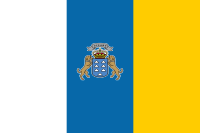 Canarian people
Canarian people -
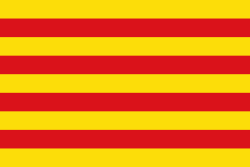 Catalan people
Catalan people -
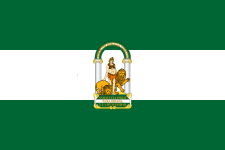 Andalusian people
Andalusian people -
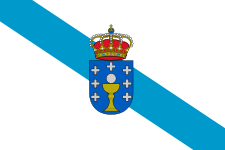 Galician people
Galician people -
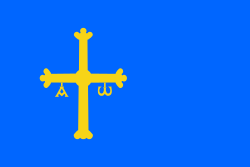 Asturian people
Asturian people
The Slave trade brought Africans to Cuba during its early history: Between 1842 and 1873, 221,000 African slaves entered Cuba.[8]
Other European people that have contributed include:
 French
French Portuguese
Portuguese-
 Italians
Italians  Germans
Germans Russians
Russians
People from Asia:
 Chinese
Chinese Filipino
Filipino
Between 1842 and 1873, 124,800 Chinese arrived.[8]
There is also a small number of Jews living in Cuba.
Genetics
An autosomal study from 2014 has found out the genetic ancestry in Cuba to be 72% European, 20% African and 8% native American.[9]
A 1995 study done on the population of Pinar del Rio, found that 50% of the Mt-DNA lineages (female lineages) could be traced back to Europeans, 46% to Africans and 4% to Native Americans. This figure is consistent with both the historical background of the region, and the current demographics of it.[10]
According to another study in 2008, the Native American contribution to present-day Cubans accounted for 33% of the maternal lineages, whereas Africa and Eurasia contributed 45% and 22% of the lineages, respectively. Haplogroup A2 is the main Native American haplogroup in Cuba (21.9% of the total sample), accounting for 67% of the Native American mtDNA gene pool. Regarding Y-chromosome haplogroups (male lineages), 78.8% of the sequences found in Cubans are of West Eurasian origin, 19.7% of African origin and 1.5% of East Asian origin. Among the West Eurasian fraction, the vast majority of individuals belong to West European haplogroup R1b. The African lineages found in Cubans have a Western (haplogroups E1, E2, E1b1a ) and Northern (E1b1b-M81 ) African origin. The "Berber" haplogroup E1b1b1b (E-M81), is found at a frequency of 6.1%.[11]
According to Fregel et al. (2009), the fact that autochthonous male North African E-M81 and female U6 lineages from the Canaries have been detected in Cuba and Iberoamerica, demonstrates that Canary Islanders with indigenous ancestors actively participated in the American colonization.[12]
Y-DNA
| N[13] | E-M33 | E-M75 | E-M2 | E1b1b-M35 | E1b1b-M78 | E1b1b-M81 | E1b1b-M123 | G | I | J2 | T | R1a | R1b | N/O | O-P31 |
| 132 | 0.8% | 1.5% | 9.8% | 1.5% | 4.5% | 6.1% | 1.5% | 6.1% | 8.3% | 6.1% | 1.5% | 1.5% | 50.8% | 0.8% | 0.8% |
mtDNA
| N[13] | L | U6 | A | B | C | D | H | I1 | J* | J2a | J1b | J2 | K | T* | T1a | T2 | T | U* | U4 | U4a2 | U5a | V | W |
| 245 | 43.3% | 2% | 22.4% | 2% | 5.3% | 3.3% | 9% | 0.4% | 2.4% | 0.4% | 0.4% | 0.4% | 0.8% | 0.4% | 0.8% | 0.8% | 0.8% | 0.8% | 0.8% | 1.2% | 0.8% | 0.8% | 0.4% |
Language
Spanish is the official language of Cuba. Of all the regional variations of the Spanish language, traditional Cuban Spanish is most similar to, and originates largely from the Spanish spoken in the Canary Islands. Cuba owes much of their speech patterns to the Canarian migration, which in the 19th and early 20th century was heavy and continuous. There was also migrations of Galicians and Asturians as well, but they did not leave a mirror image on their accent on the Cuban accent like the Canarian people did. Much of the typical Cuban replacements for standard Spanish vocabulary stems from Canarian lexicon. For example, guagua (bus) differs from standard Spanish autobús the former originated in the Canaries and is an onomatopoeia stemming from the sound of a Klaxon horn (wah-wah!). An example of Canarian usage for a Spanish word is the verb fajarse [14] ("to fight"). In standard Spanish the verb would be pelearse, while fajar exists as a non-reflexive verb related to the hemming of a skirt.
Other languages are Cuban Sign Language and Lucumi.
Religion
Cuba has a multitude of faiths reflecting the island's diverse cultural elements. Catholicism, which was brought to the island by Spanish colonialists at the beginning of the 16th century, is the most prevalent professed faith. After the revolution, Cuba became an officially atheistic state and restricted religious practice. Since the Fourth Cuban Communist Party Congress in 1991, restrictions have been eased and, according to the National Catholic Observer, direct challenges by state institutions to the right to religion have all but disappeared,[15] though the church still faces restrictions of written and electronic communication, and can only accept donations from state-approved funding sources.[15] The Roman Catholic Church is made up of the Cuban Catholic Bishops' Conference (COCC), led by Jaime Lucas Ortega y Alamino, Cardinal Archbishop of Havana. It has eleven dioceses, 56 orders of nuns and 24 orders of priests. In January 1998, Pope John Paul II paid a historic visit to the island, invited by the Cuban government and Catholic Church.
Afro-Cuban religions, a blend of native African religions and Roman Catholicism, are widely practiced in Cuba. This diversity derives from West and Central Africans who were transported to Cuba, and in effect reinvented their African religions. They did so by combining them with elements of the Catholic belief system, with a result very similar to Brazil
Protestantism, introduced from the United States in the 18th century, has seen a steady increase in popularity. 300,000 Cubans belong to the island's 54 Protestant denominations. Pentecostalism has grown rapidly in recent years, and the Assemblies of God alone claims a membership of over 100,000 people. The Episcopal Church of Cuba claims 10,000 adherents. Cuba has small communities of Jews, Muslims, Buddhists and members of the Bahá'í
Demographic statistics from the Official 2002 Cuba Census
| Part of a series on |
| Life in Cuba |
|---|
 |
| Age structure |
| |
|---|---|---|
| Median age | Total: 39.5 years
| |
| Sex ratio |
| |
| Life expectancy at birth | Total population: 77.41 years
| |
| Racial groups |
| |
| Religions | Nominally 85% Roman Catholic prior to the Revolution; Protestants, Jehovah's Witnesses, Muslims, Jews, and Santeria are also represented. | |
| Languages |
| |
| Literacy | Total population: 99.8% (2002 census)
Definition: age 15 and over can read and write |
Illicit migration is a continuing problem. Cubans attempt to depart the island and enter the US using homemade rafts, alien smugglers, direct flights, or falsified visas; Cubans also use non-maritime routes to enter the US including direct flights to Miami and overland via the southwest US/Mexican border, and islands adjacent to Puerto Rico and the US Virgin Islands.
See also
- Cuban American
- Spanish people
- Canarian people
- Catalan people
- Chinese Cuban
- Afro-Cuban
- Isleños
- Jewish Cuban
- Women in Cuba
- Ranked list of Cuban provinces
References
- ↑ 1.0 1.1 official 2012 Census
- ↑ "Censos en Cuba" [Census in Cuba] (PDF) (in Spanish). National Office of Statistics of Cuba. Retrieved 24 February 2014.
- ↑
- ↑ http://www.dhs.gov/sites/default/files/publications/immigration-statistics/yearbook/2012/LPR/table3d.xls
- ↑ United nations. Demographic Yearbooks
- ↑ Oficina Nacional de Estadística e Información
- ↑ The 1899 Cuba Census. See Page 97.
- ↑ 8.0 8.1 8.2 La inmigración entre 1902 y 1920
- ↑ http://www.plosgenetics.org/article/info%3Adoi%2F10.1371%2Fjournal.pgen.1004488#pgen-1004488-g001
- ↑ Torroni, Antonio; Brown, Michael D.; Lott, Marie T.; Newman, Nancy J.; Wallace, Douglas C. (1995). "African, Native American, and European mitochondrial DNAs in Cubans from Pinar del Rio Province and implications for the recent epidemic neuropathy in Cuba". Human Mutation 5 (4): 310–7. doi:10.1002/humu.1380050407. PMID 7627185.
- ↑ Y-chromosome haplogroup frequencies found in Cuba (132 individuals) grouped according to their phylogeographic origin, Mendizabal et al. (2008)
- ↑ Fregel, Rosa; Gomes, Verónica; Gusmão, Leonor; González, Ana M; Cabrera, Vicente M; Amorim, António; Larruga, Jose M et al. (2009). "Demographic history of Canary Islands male gene-pool: replacement of native lineages by European". BMC Evolutionary Biology 9: 181. doi:10.1186/1471-2148-9-181. PMC 2728732. PMID 19650893.
- ↑ 13.0 13.1 Mendizabal et al (2008).Genetic origin, admixture, and asymmetry in maternal and paternal human lineages in Cuba
- ↑ fajar at Diccionario de la Real Academia Española.
- ↑ 15.0 15.1 Catholic church in Cuba strives to reestablish the faith National Catholic Observer
- ↑ https://www.cia.gov/library/publications/the-world-factbook/fields/2177.html
- ↑ CIA - The World Factbook - Cuba
 This article incorporates public domain material from the CIA World Factbook document "2006 edition".
This article incorporates public domain material from the CIA World Factbook document "2006 edition".
- Statoids (July 2003). "Municipios of Cuba". Retrieved 2007-02-15.
- Matanzas Portal (2004). "Population gowth by municipality and province". Archived from the original on 2007-02-15. Retrieved 2007-02-21.
- The Peninsular (May 2007). Population, birth rate falling in Cuba: Official
External links
| ||||||||||